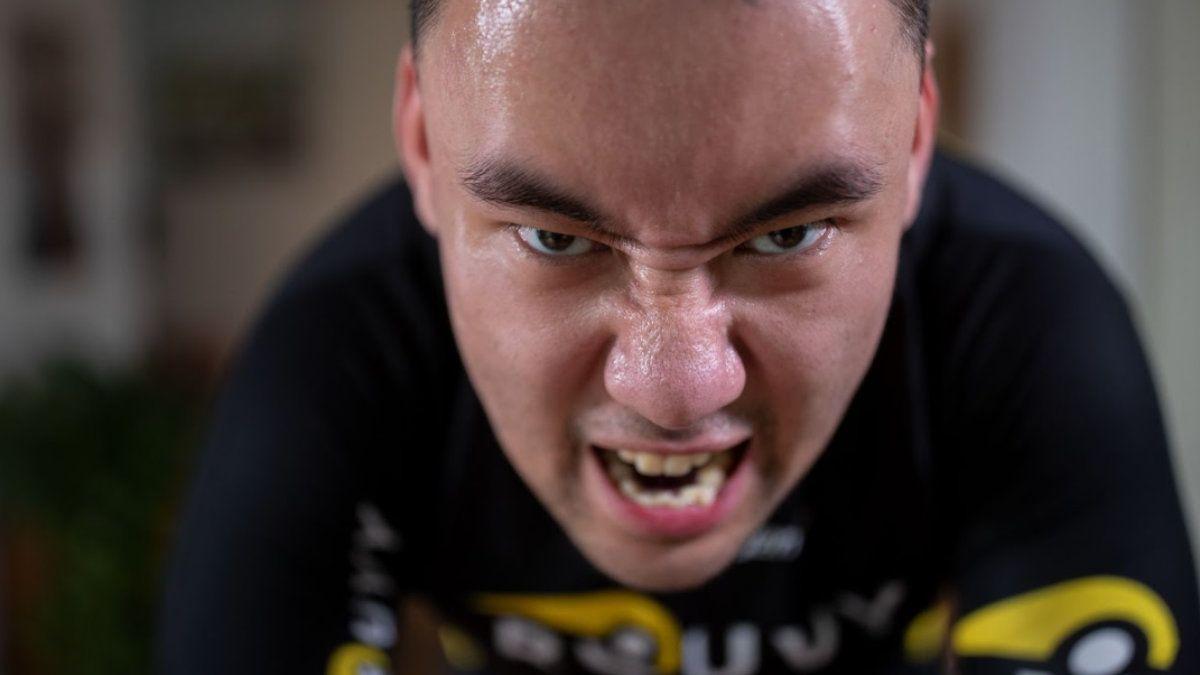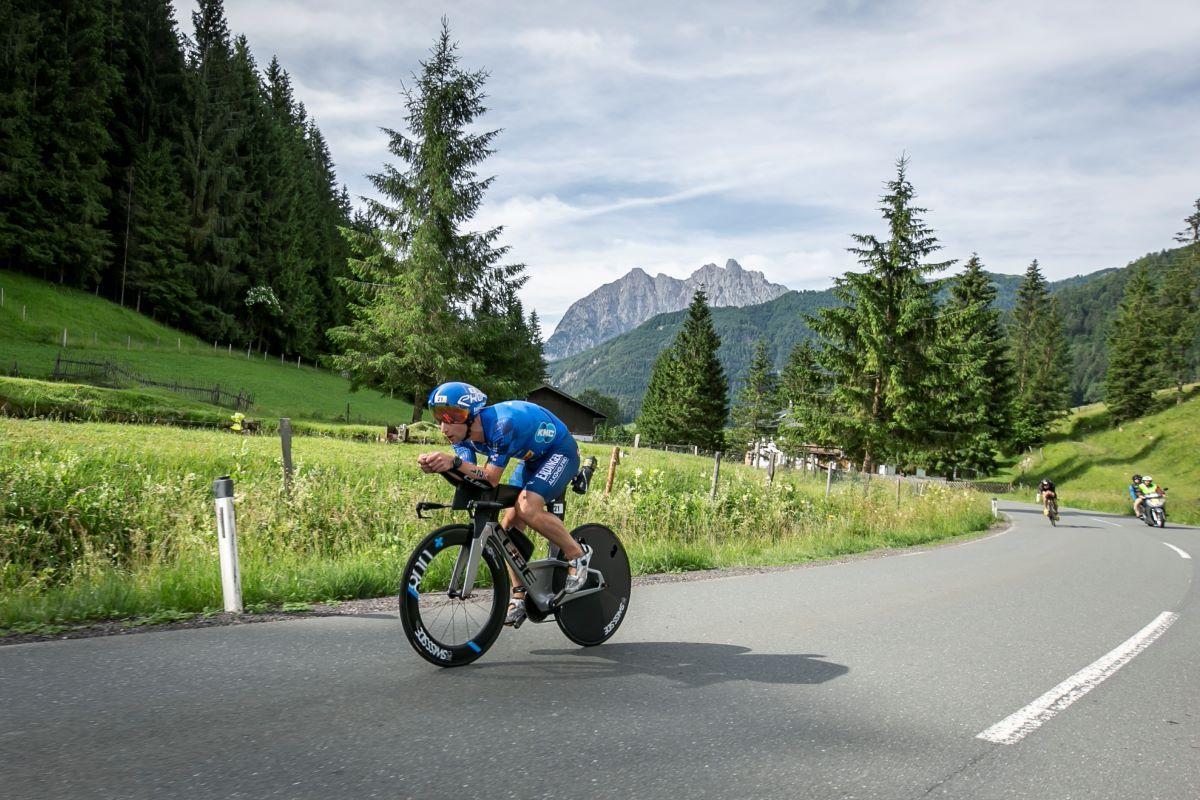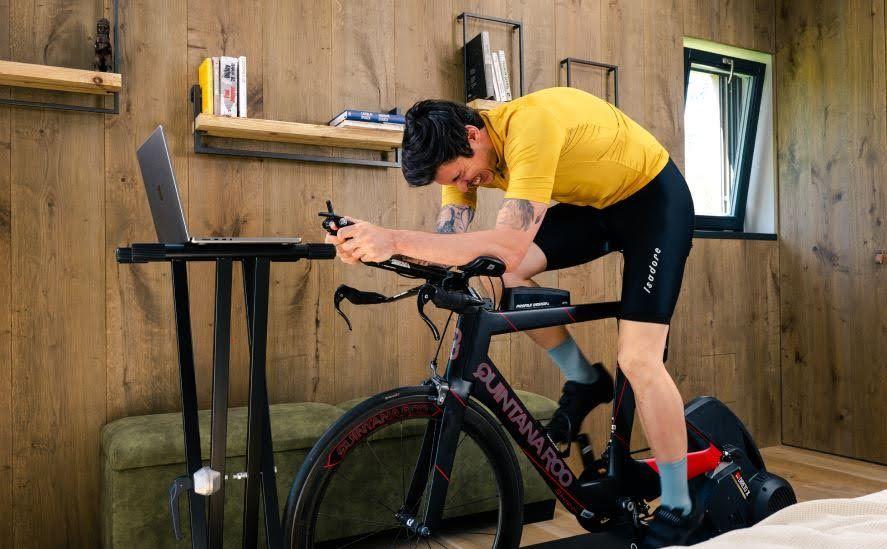Many people will use FTP to set goals. It’s also a great way to see how you fair up against your competition if you plan to race. In this article, we’ll be telling you everything you need to know about FTP. This is what we’re going to speak about;
- What is FTP
- How FTP is calculated
- The benefits of knowing your FTP
- How to improve your FTP
What is FTP?
FTP stands for Functional Threshold Power. It is an estimation of the highest average power you would be able to sustain for an hour. It’s measured in Watts, which is a unit of power. To find out more about watts, check out our article on what watts are.
How is FTP Calculated?
FTP tests are not the most enjoyable of cycling workouts. They are typically very challenging, and you must go all in to score the highest you can. Generally, an FTP test is a warm-up, then 20 minutes of the highest average power you can hold and cool down. You can be sitting or standing, any cadence, but there are no breaks. It's just one solid work effort then we calculate at the end.
Here are some of our ROUVY tests that can determine FTP. You have three to choose from, and they only differ with the warm-up times. We recommend the longer warm-up you can do, the better, as it is better for the muscle and helps prevent injury.
One of the most convenient and accurate FTP tests to calibrate training zones correctly is the Ramp Test, which is now available on ROUVY. You can find it in the Workouts section of the app. As it's quick and easy to execute, a rider can frequently track fitness changes and apply the FTP number to the training zones.
The Ramp Test is simply a graded exercise test. Your goal is to ride as close as possible to the target power for as long as you can until the point at which you can no longer sustain the effort. It begins with a 5-minute warmup, then gets slightly harder every minute. Each step will increase by 20 watts every minute. It would help you get the best result if you had well-rested legs to do the job. It will end with a cooldown.
There is also a Ramp Test Lite designed for riders weighing under 70kg. It's very similar but each step increases by 10 watts every minute.

So after you have done your test and got the average wattage you could hold, you need to take that score minus 5%. So say that your FTP is 200w. It will drop to 190w.
You should be able to hold this final figure of 190w for an hour if you give everything. The best way to do a test is to go with ROUVY’s designed workouts. They will do all the calculations for you, and they can set all your zones up for any workout you want to do after.
The Benefits of knowing your FTP
Many cyclists ask us, “Why is it important to know your FTP?”. Well, the FTP number can be such a huge benefit. Here’s why;
Calculate your Training Zones
The first great benefit of knowing your FTP is defining your training zones. This means you can efficiently train with power. Here’s a great example of your power zones which can be defined using a chart like so.
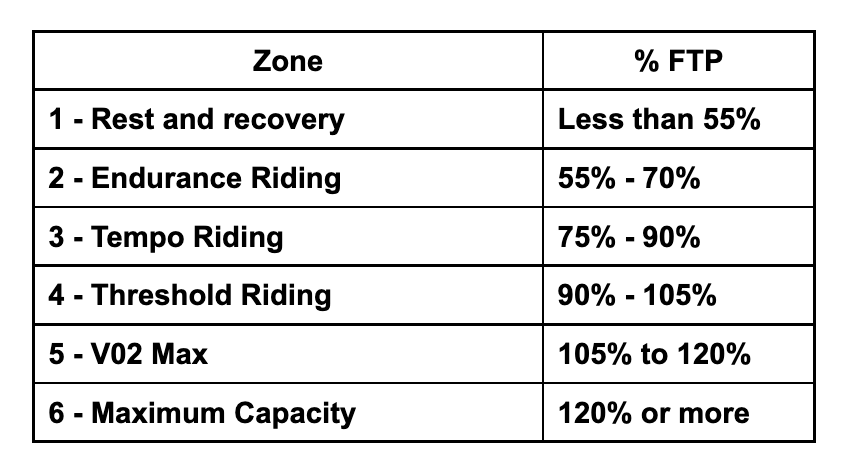
A good example is if you were to do intervals, you could switch between Zone 1 Rest and Recovery, Zone 3 Tempo Riding, and Zone 5 V02 Max. This would be an excellent workout structure with your zones pre-calculated by ROUVY. This workout on the ROUVY application is called the V02 Max Booster.
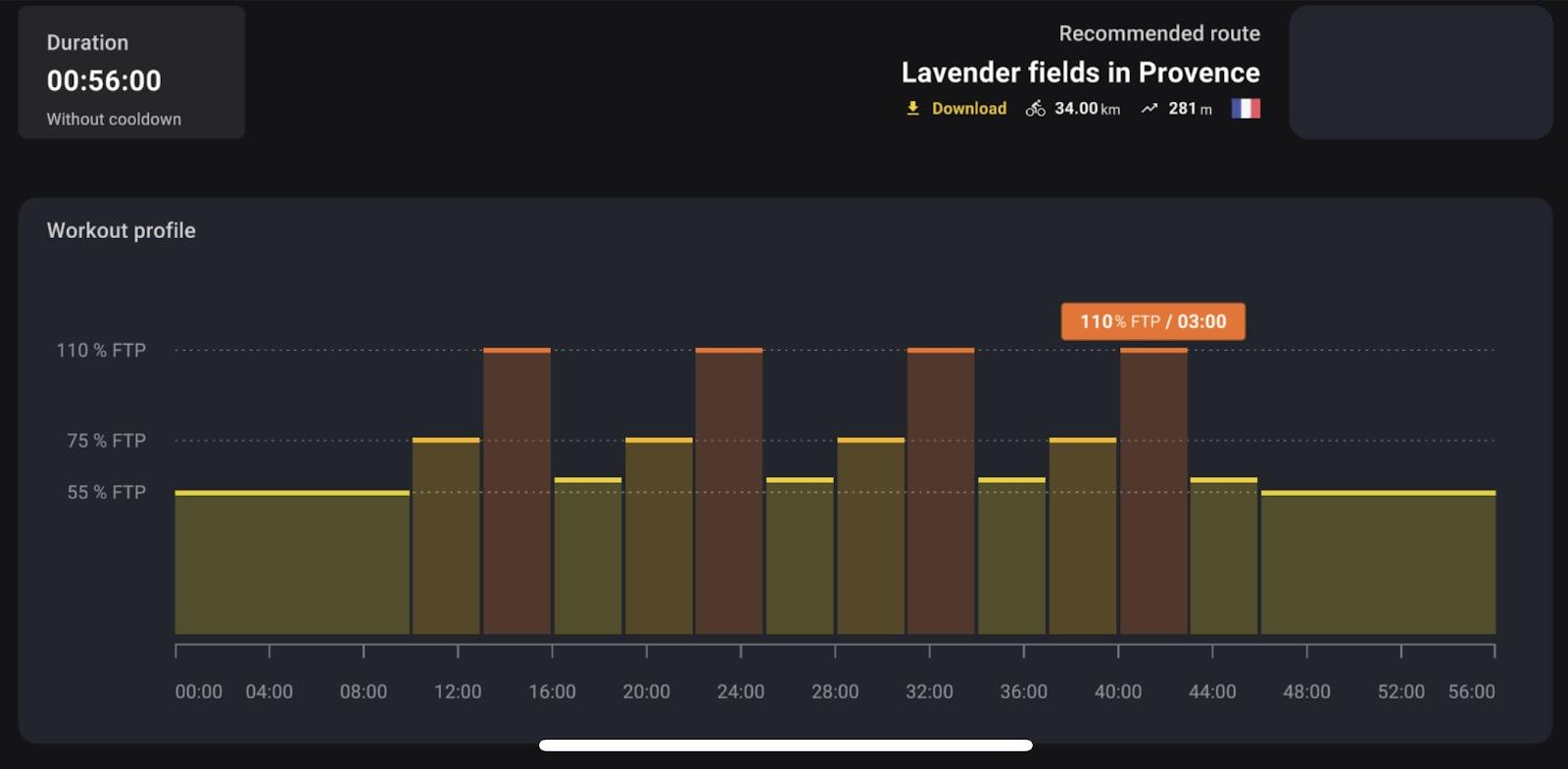
Measure Your Fitness Levels and Improvement
Your FTP is a great way to measure your cycling fitness level. There’s a good chance you want to know where you stack up against other cyclists. An FTP can tell you where you are physically, and it can be a great tool to see if you are ready to start racing if that's a goal of yours.
When looking for improvement, many coaches recommend doing an FTP test at the start of a training program and then at regular intervals throughout. This is a great way to see progress and understand that the training you are doing is actually working and making the correct adaptation on the body.
Have a better pacing
Knowing what your FTP is can hugely help you with pacing. Suppose you are planning on longer races that are over 30 minutes. Then pacing plays an important part. If you know the wattage that is sustainable for a certain amount of time, you can apply that to ensure you're working at the correct level.
A racer that can pace well will finish a race strong. They know how hard to push to get to the end of the race with no energy left but not burnt out. One of the most challenging parts for cyclists is learning how to pace and understand energy management.
To Work Out Your Watts Per Kilo
If you want to get a better, more accurate representation of how powerful you are as a cyclist, then knowing your WPK (Watts Per Kilo) is the way to go. To find out your watts per kilo, you need to take your FTP and divide it by your body weight as below;
FTP / Body Weight in KG = WPK
200w / 80 kg = 2.5 wpk
How to improve your FTP?
We often get asked about how to improve your FTP to get stronger as a cyclist. ROUVY isn’t just an application to enter a virtual world. It offers amazing training plans and programs that can boost that FTP quickly. Here are some of our recommended ROUVY training plans:
Start Easy
If you’re not looking for anything too aggressive, the Start Easy plan will be perfect for you. It’s eight workouts over four weeks and is ideal if you are back from a break from cycling or new to doing structured training.
Get Fitter
Next, we have Get Fitter. This is a level up from Start Easy and offers 12 workouts over 4 weeks. This will push you, and some of the workouts will really get the heart pumping.
Level Up
Say you're already quite fit but want to take it to another level. If so, Level Up could be the perfect program for you. Three workouts per week which are going to push you outside your comfort zone and give you the step up you need.
Push Harder
If you’re looking for a training plan to take you above and beyond what you thought you could do, then consider Push Harder. It’s 17 workouts over six weeks, pushing your fitness to the limit and getting you the improvements you need quickly.
A Final Note
Knowing your FTP can be really helpful. It can give incredible structure for your training, help you understand the level of cyclist you are, and is such a benefit when it comes to pacing. We hope you enjoyed our article and are ready to get on the trainer and give 20 minutes of your finest.
